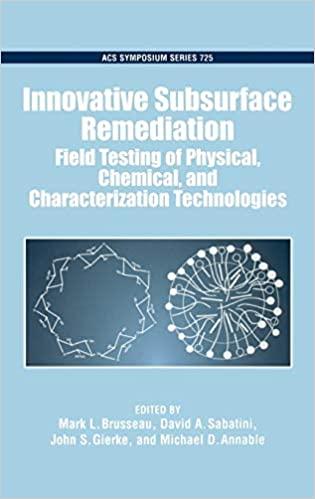Question
Question 1: (9 marks) A thermometer has a time constant of 15 seconds and behaves as a first-order system. The thermometer is initially at 35oC
Question 1: (9 marks) A thermometer has a time constant of 15 seconds and behaves as a first-order system. The thermometer is initially at 35oC and then suddenly subjected to a temperature of 130oC. Calculate the following:
a) Calculate the 85 per cent rise time and the time to reach 98% of the steady-state temperature. (4 marks)
b) Determine the phase lag and amplitude attenuation if the system is subjected to a 25oC temperature variation and a frequency of 0.02 Hz. (5 marks)
Question 2: (4 marks) A pressure transducer operates as a second-order system having a natural frequency of 12,000 Hz.
Find the resonance frequency of the transducer for damping ratios, = 0.3, 0.4, 0.707, and 2.
Explain the behaviour of the system with a damping ratio =2.
Question 3: A first-order temperature sensor with a time constant of 0.4 seconds at an initial temperature of 1120 C is suddenly exposed to a temperature of 15oC.
a) Determine the temperature at the rise time
b) How long does it take the sensor shows 35oC.
Question 4: The normalized detectivity, as a function of incident radiation wavelength, of various detectors at room temperature is shown below:
Calculate the incident radiation (in watts) at 3 m that is required to produce a signal-to-noise (S/N) ratio of 35 dB with a Lead Selenide detector, having an area of 5mm2. Consider f to be 1Hz in the detectivity equation.
Question 5: The output of a transducer with a total resistance Rm of 80 (Rm is the maximum resistance of the potentiometer) is to be measured with a voltage sensing circuit like that shown in the figure below. The sensitivity (S) is defined as: The sensitivity is to be a maximum at the midpoint of the transducer.
Calculate the sensitivity at the 20 and 80 percent positions, assuming a voltage source Ei of 12 V.
Question 6 The following table contains ISA tag names for different devices. Complete the table by providing the description of each tag.
Question 7: The following data are taken from a heat transfer test to be used to develop a control algorithm. The expected correlation is y = axb.
Plot the data using the appropriate graphical analysis technique and provide a, b and R2. The values of predicted is required. xy 500 2.5 550 3.1 675 3.4 890 3.6 945 3.7 1150 4.2 1300 3.5 2000 4.1 1370 3.4 1400 3.6 1420 3.7 2050 4.2 1490 3.7 1510 3.8 1900 4.1 1560 3.9 1840 4.1 1640 3.9 2120 4.3 1690 4 1720 4.2
Question 8: A thermal equilibrium thermocouple is used to measure the temperature of a fluid with a velocity of 750 ft/s. then the thermocouple I immersed to the same fluid with the specific heat = 0.7 , and the same speed with the correction factor K=0.87. If the total temperature is 56F, what temperature is shown by the prob?
The mechanical equivalent of heat J=778 ft-lbf/Btu. = 32.174 . .2
Question 9: A Data Acquisition Device (DAQ) receives a signal from a thermocouple used for temperature measurement. The thermocouple signal varies from 0 to 45 mV for a temperature range of 20oC to 1800oC. The DAQ has the following configuration options: Resolution: 12 Bit / 16 Bit Range: 0 to 10 V / -10 V to 10 V Amplification: 1, 10, 20, 100 What configuration should be selected to detect a change of 0.1oC? Explain why.
8 Question 10: A U-tube manometer (as shown above) uses an oil having a specific gravity of 0.82 for the manometer fluid. One side of the manometer is open to local atmospheric pressure () of 75.0 cm Hg and the difference in column heights (i) is measured as 18 cm 1.0 mm, when exposed to an air source or pressure signal at 28C. Standard acceleration due to gravity is present. a) Calculate the pressure of the air source in pascals. b) Estimate (in pascals) and comment on, the uncertainty of the measurement.
Step by Step Solution
There are 3 Steps involved in it
Step: 1

Get Instant Access to Expert-Tailored Solutions
See step-by-step solutions with expert insights and AI powered tools for academic success
Step: 2

Step: 3

Ace Your Homework with AI
Get the answers you need in no time with our AI-driven, step-by-step assistance
Get Started


